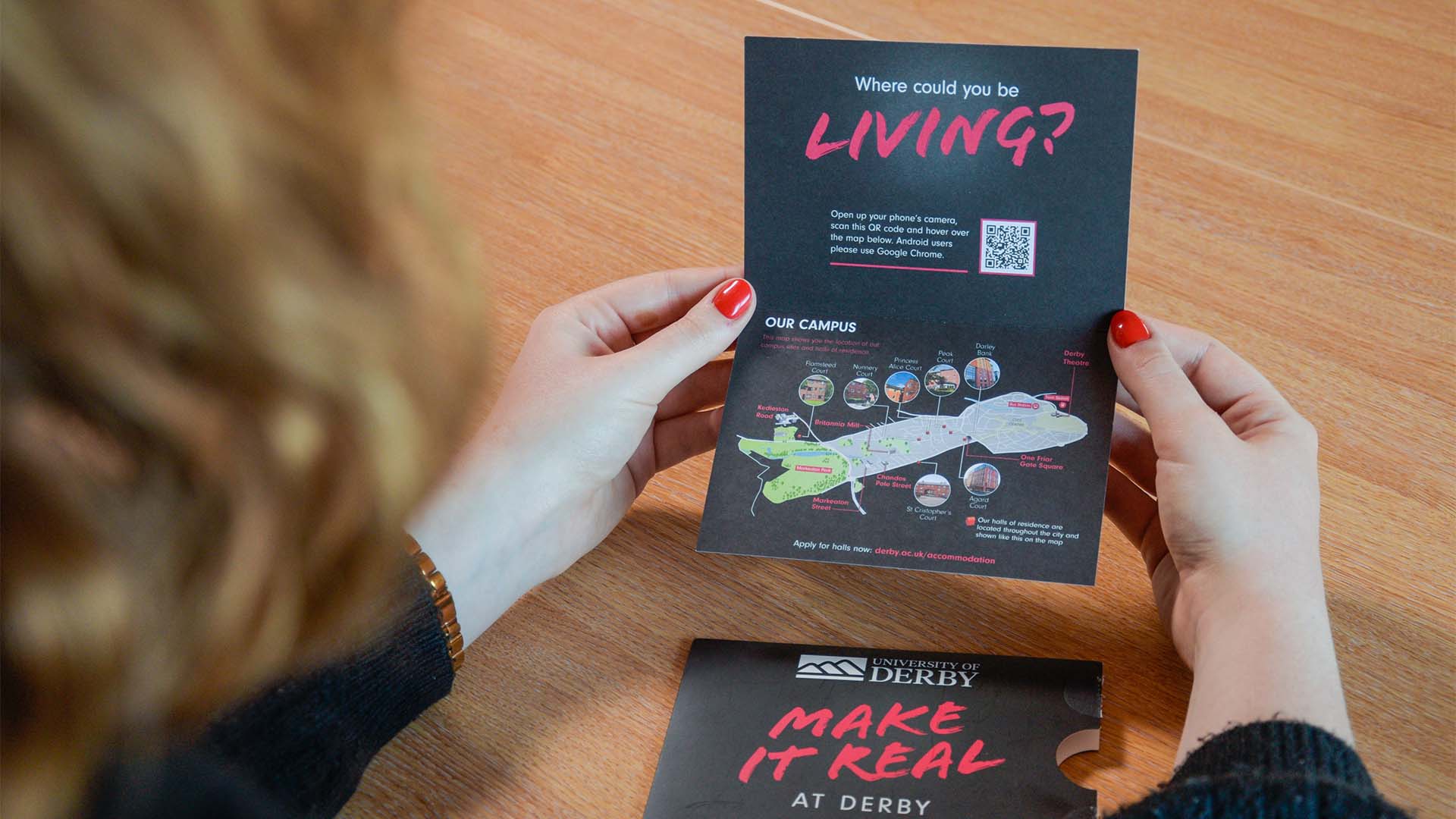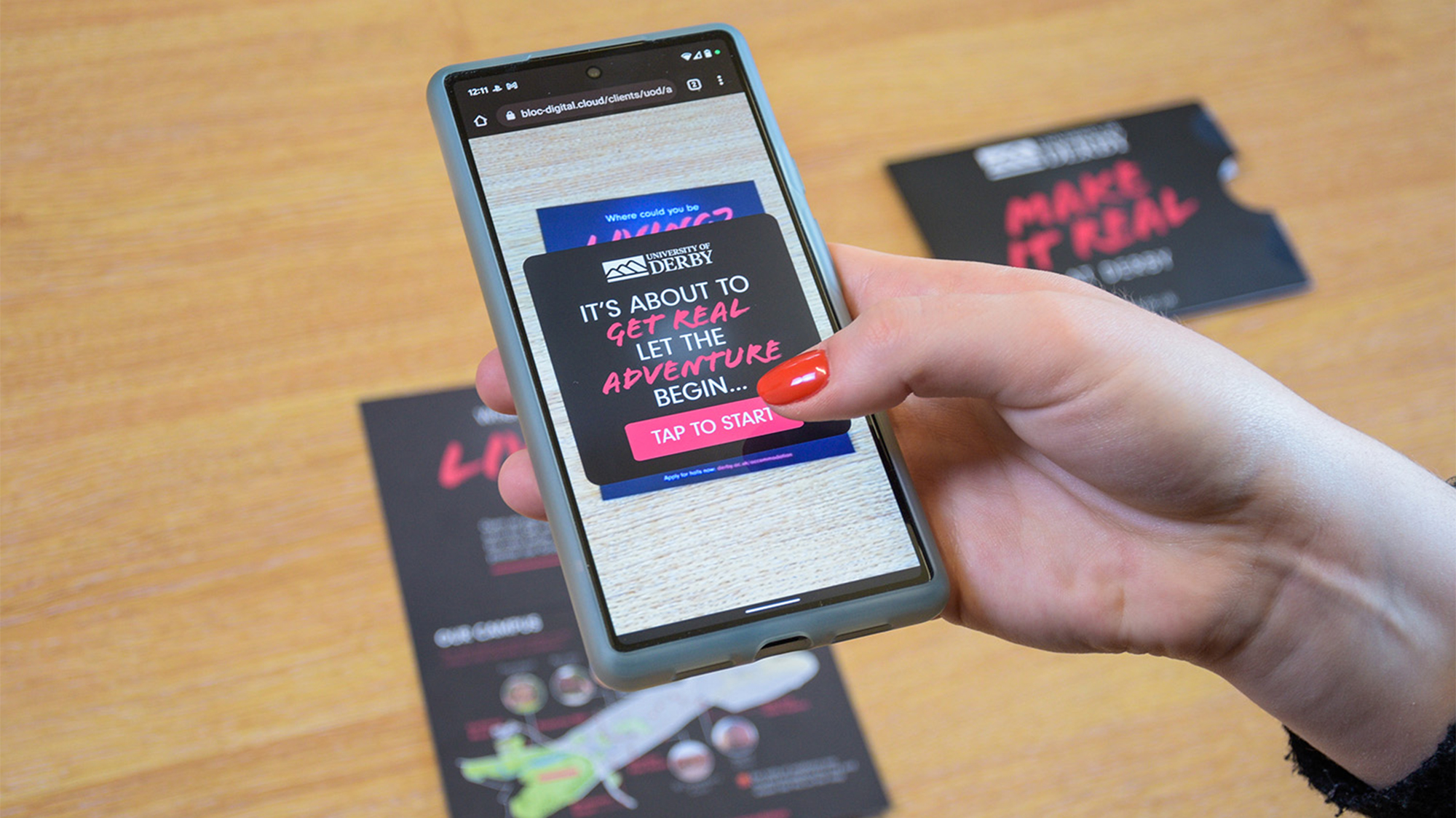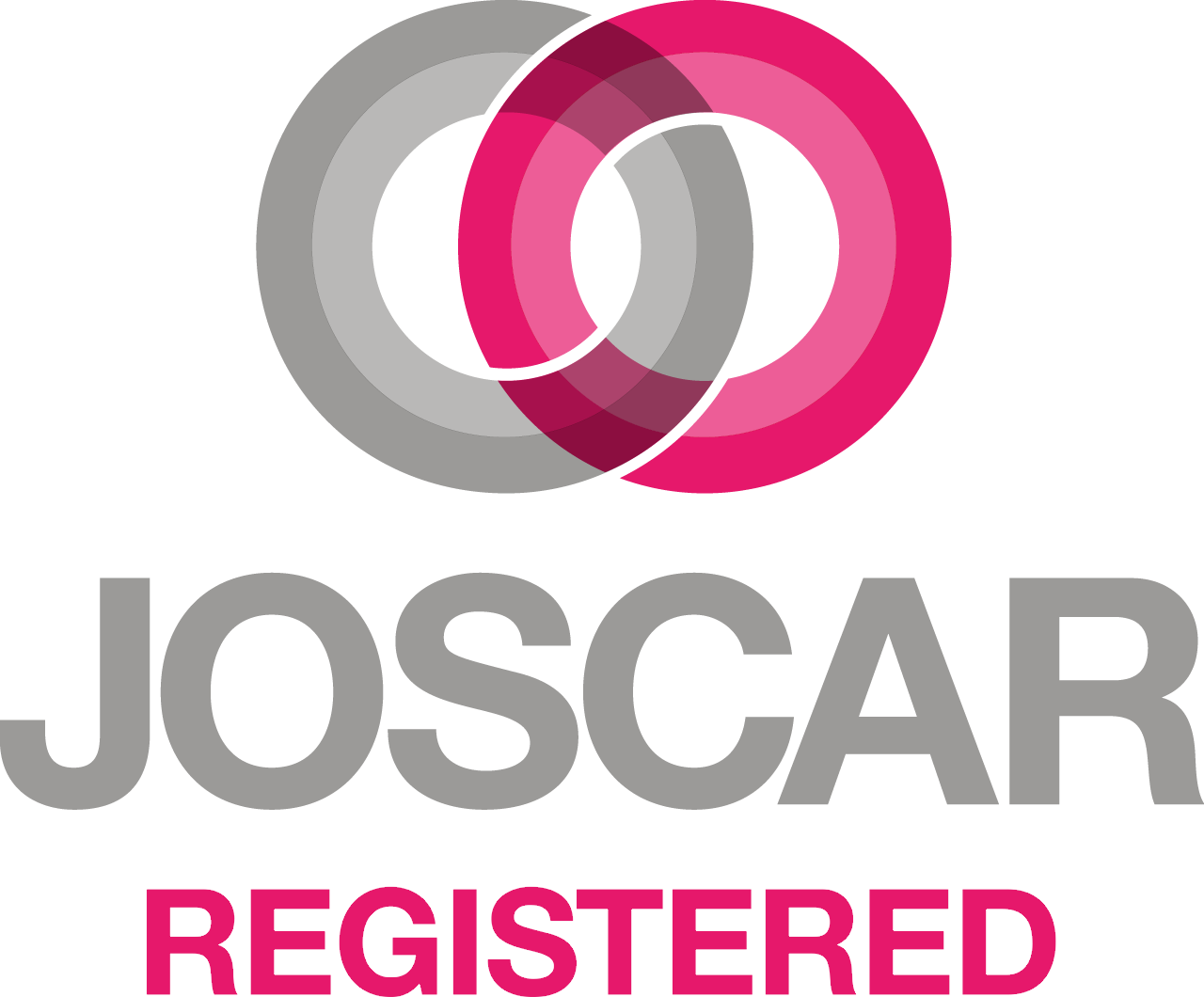
WebAR: bringing AR experiences direct to your browser
Imagine how creative your marketing communications could be if your audiences were able to access captivating Augmented Reality (AR) content from any product label, business card, flyer or printed advertisement, with only a standard smartphone to hand... no app required.
Helping the University of Derby to attract and inspire increasingly tech-savvy students, we harnessed emerging WebAR technologies and print expertise to provide a new kind of experience. The result brought an immersive showcase of the university's culture into the palm of students' hands. Browser-based and highly accessible, the AR solution would enable users to envisage what it’s like to live and learn in our city.
But what is WebAR? And what does it mean for the future of Augmented Reality?
Helping the University of Derby to attract and inspire increasingly tech-savvy students, we harnessed emerging WebAR technologies and print expertise to provide a new kind of experience. The result brought an immersive showcase of the university's culture into the palm of students' hands. Browser-based and highly accessible, the AR solution would enable users to envisage what it’s like to live and learn in our city.
But what is WebAR? And what does it mean for the future of Augmented Reality?
WebAR vs native apps: a balance between accessibility and visual fidelity
Whether it’s as simple as placing a digital product on your desk or as immersive as standing in the great hall of a stately home, Augmented Reality enables us to see the real world with digital information overlayed. Typically when we talk AR, however, we refer to ‘native’ app-based technology (see the below example), or even AR that requires a specific headset like the Microsoft HoloLens. But WebAR is exploding in capability and popularity too...
With WebAR, audiences can access AR content by using their mobile phone to click a URL link or scan a QR code – no app needed. Downloading an application to begin enjoying an experience can be a significant barrier to entry for customers. WebAR gives users more convenient access to AR content – one click and they can get involved!
A highly important bonus is the enormous potential for organisations to extend their brand's reach and engagement. Customers can more easily view your experience and, in turn, are encouraged to share it. Being browser-based also means the technology can integrate with Google Analytics, HubSpot and the like, providing useful tracking information for marketing purposes.


But the web-based nature of WebAR also brings drawbacks. Restricted by the speed of a user’s network connection, and because the web loads content 'Just in Time' rather than ahead of time, WebAR isn't as powerful in its capabilities. The look and complexity of visuals and content is limited. Highly detailed and interactive 3D models and animations, which involve high volumes of data processing, lead to a lower fidelity experience in regions without 4G or 5G access. It's for this reason that we kept a keen eye on this emerging technology as it evolved, waiting until it became more reliable before developing solutions for our clients.
Yes, WebAR is not as powerful as its app-based equivalent, but it's providing instantly accessible and exciting immersive experiences across multiple devices and platforms... ideal for simple yet captivating AR. It’s most certainly found a place in B2C, STEM, and applications where quick impact is required – and the University of Derby’s recent ‘Making it Real’ campaign is a perfect case in point.
Yes, WebAR is not as powerful as its app-based equivalent, but it's providing instantly accessible and exciting immersive experiences across multiple devices and platforms... ideal for simple yet captivating AR. It’s most certainly found a place in B2C, STEM, and applications where quick impact is required – and the University of Derby’s recent ‘Making it Real’ campaign is a perfect case in point.
‘Making it Real’ with WebAR and print
As A-Level and college students geared up to make one of the biggest steps in their adult lives, the University of Derby’s marketing and communications team were looking to level up their yearly open day collateral and capture the attention of their next cohort of students. Our solution was to elevate traditional print flyers with WebAR.
WebAR was the perfect choice for their ‘Make it Real’ campaign for two reasons. First, the web-based nature of the technology would support the university’s low friction requirements – enabling open day visitors to gain rapid access with the simple scan of a QR code. Second was its ‘out of the box’ style. A rich and interactive AR showcase of the university’s culture would offer students a greater sense of involvement, as well as being an innovative way of presenting the information.
Such content could have been included in text and image-heavy collateral, however, the collaboration of our Creative and Technology teams resulted in a more memorable experience... as demonstrated by our client feedback!
Such content could have been included in text and image-heavy collateral, however, the collaboration of our Creative and Technology teams resulted in a more memorable experience... as demonstrated by our client feedback!
WebAR: Bringing AR to the Masses?
While app and headset-based experiences continue to be mainstream, WebAR is evolving and advancing. As the technology becomes more sophisticated and its drawbacks diminish – particularly as we see improvements in visual fidelity – it could become a viable alternative for many more use cases.
Enhanced convenience and accessibility could see WebAR bring Augmented Reality into the every day... we look forward to what its future will bring!
Interested in exploring WebAR for your business? Get in touch below.
Enhanced convenience and accessibility could see WebAR bring Augmented Reality into the every day... we look forward to what its future will bring!
Interested in exploring WebAR for your business? Get in touch below.


